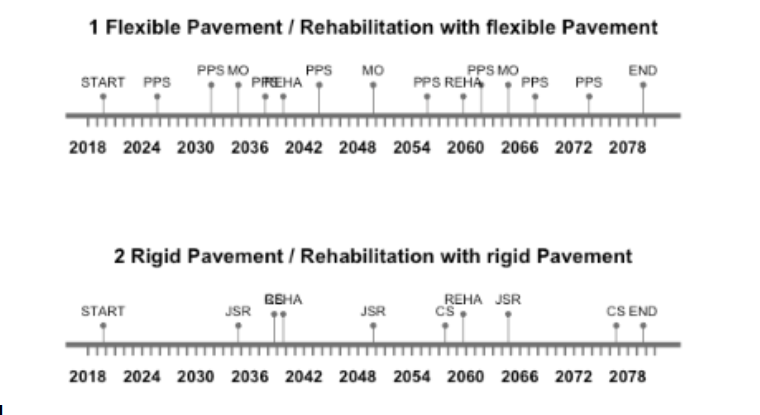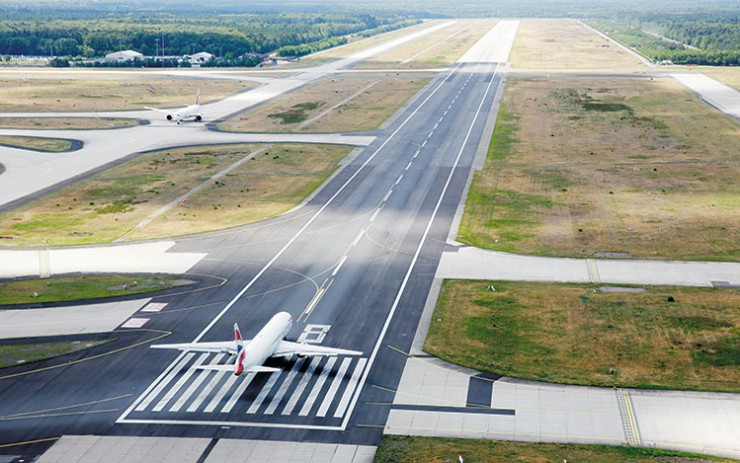The design phase has a big impact on the whole life cycle of a civil engineered system. Since the system is provided fo a long lifetime, maintenance is a very important aspect towards a high and safe performance level. Therefore it is very important to keep the maintenance effort in mind while designing the civil engineered system. For the purpose of a heavy used airfield, like in this system, there are basically two ways to design the pavement of the runways, shoulders and taxi ways (which leads in our system from the hangar to the runway); a rigid and a flexible pavement structure. They are both built up similar, but are different in amount and thickness of the used materials. Runway pavement design practice requires using a 20-year design life, but recent research has found that airport pavements largely exceed this design life value. For new/reconstruction projects, an 1 analysis period of 40 years or more is considered appropriate. For our Assignment we are going to plan with full rehabilitations, so the runway is able to operate up to a lifetime of 100 yrs.
2. Types of pavements
There are typically two types of pavements which are used for runways: flexible and rigid. The layering of these different pavements are similar but the flexible pavement supports loads through bearing while the rigid strength is based on flexural action. In the following I am going to show the typical layering of a flexible pavement structure (Hot mixed asphalt / HMA) and of a rigid pavement structure (Portland Cement Concrete / PCC):
a) wearing course
The very powerful hot mixed asphalt wearing surface is made of different aggregates bound together with asphalt cement in combination with other bituminous binders. It prevents the base course of water infiltration and comes with a smooth surface free from loose particles and with very good friction. It’s with ca. 15 cm thickness quite slim compared to the PCC wearing course with ca. 44 cm thickness. This reenforced wearing course of the rigid system made out of very strong PCC, takes more time to build, but provides for a longer lifetime with less maintenance interventions.
b) base course
It serves as the fundamental component of the pavements. This layering transfers the load of the load of the wheels to the pavement foundation, the subbase and subgrade. The material of the base course is a mixture of stabilising and granular hard, durable aggregates.
c) Subbase
This layer is used in areas where frost action is severe or the subgrade soil is weak. Due to climate change the use of subbase laying is increasing, because the extreme weather gatherings will also increase. This layer consists of stabilised compacted granular material.
d) Subgrade
The subgrade is the soil layer that forms the foundation of the pavement structure. Subgrade soils are subjected to lower stresses than the surface, base, and subbase courses. Since load stresses decrease with depth, the controlling subgrade stress usually lies at the top of the subgrade. The combined thickness of subbase, base, and surface course must be great enough to reduce the stresses occurring in the subgrade to values that will not cause excessive distortion or displacement of the subgrade soil layer.
A HMA is build faster, with no construction joints, but needs more maintenance caring. While the PCC is more resistant but due to its rigid structure it needs construction joints, which extends the construction time.
Below, there is a maintenance plan for a lifetime of 60 yrs. with a full rehabilitation after half of operating time.

In the system we are investigating, we will plan with a heavy airplane mix of 3000 take offs and landings of a full packed Boeing 747 with a load of 43.359 kg.
